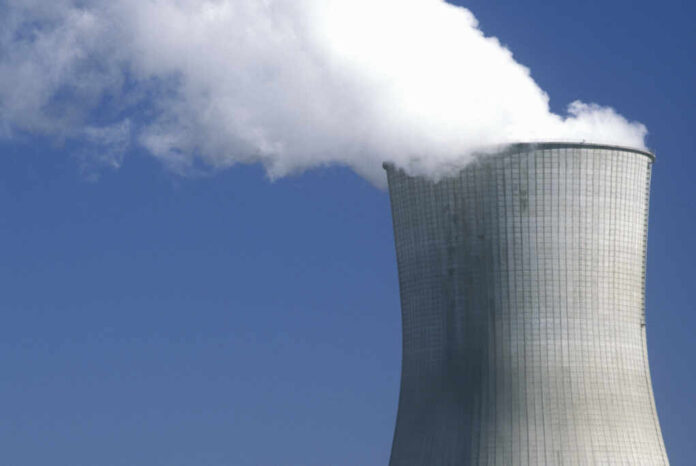
While America’s adversaries are racing ahead with next-generation nuclear technology, U.S. progress on small modular nuclear reactors is stuck in a bureaucratic and budgetary quagmire that leaves our national security at risk and our energy independence in the hands of global competitors.
At a Glance
- The first U.S. small modular reactor (SMR) design was approved in 2022, but the flagship deployment project was canceled in 2023 due to runaway costs.
- International rivals like China and Russia are rapidly advancing commercial SMR technology, threatening America’s global leadership.
- Regulatory red tape and spiraling expenses have stifled private investment and utility adoption of SMRs in the U.S.
- Experts agree: without serious reform, SMRs will remain an unrealized promise, not a national security asset.
America’s SMR Ambitions Undercut by Bureaucracy and Budget Blunders
The United States once led the world in nuclear innovation, and for decades, nuclear power was a cornerstone of both our energy grid and our national security. Now, as the world faces mounting threats and energy instability, the U.S. is watching from the sidelines while adversaries charge ahead with small modular nuclear reactors. The NuScale Power SMR, developed with Idaho National Laboratory and once hailed as a beacon of American ingenuity, became the first to earn Nuclear Regulatory Commission approval in 2022. Yet, in a spectacle of government mismanagement and regulatory overreach, the much-touted Carbon Free Power Project—the nation’s first planned commercial SMR deployment—was scrapped in November 2023 after cost estimates soared beyond reach.
The Micro Modular Reactor (MMR) is a 4th Generation nuclear energy system that delivers safe, clean, and cost-effective electricity to users anywhere. MMR is being licensed in Canada and the U.S.A. and is the first "fission battery" in commercialization. pic.twitter.com/KRmWvocKSb
— US Nuclear Corp (@UltraSafeNuke) October 21, 2022
While politicians and bureaucrats pat themselves on the back for “historic” regulatory breakthroughs, the reality is that no operational commercial SMRs exist anywhere in the United States. Instead, the U.S. nuclear industry is bogged down by the very regulations meant to “protect” us, and American taxpayers are left footing the bill for projects that never break ground. Meanwhile, China, Russia, and other nations are sprinting ahead, investing in and deploying their own SMR technologies with a fraction of the red tape and a whole lot more urgency.
Watch a report: Russia and China control the future of global nuclear power
International Rivals Exploit America’s Paralysis
While American energy policy is caught in a tug-of-war between green fantasies and regulatory chokeholds, countries like China, Russia, and even Canada are seizing the opportunity to dominate the next era of nuclear power. China and Russia are already deploying advanced SMRs, setting global standards and building export markets that will leave the U.S. playing catch-up for decades. Canada, not content to sit on the sidelines, has moved forward with a BWRX-300 SMR at Darlington, with a final investment decision coming up in 2025. The message is clear: American hesitation is global competitors’ golden ticket.
Regulatory paralysis and cost overruns are not just an economic embarrassment—they’re a strategic liability. National security experts have long warned that energy independence is inseparable from national defense. Every day the U.S. delays SMR deployment, we hand our rivals another advantage, ceding both energy markets and technological leadership. If the U.S. can’t get its act together, we’re not just risking higher electricity bills—we’re undermining our own security and global standing.
The Real Obstacles: Red Tape, Not Technology
The American SMR story isn’t one of scientific failure—it’s a cautionary tale about what happens when innovation collides with bureaucratic inertia. The technology itself offers unique advantages: SMRs are scalable, flexible, and provide carbon-free baseload power—assets that should be the envy of any nation seeking true energy security. But the promise of SMRs is being suffocated by outdated regulations, sky-high capital costs, and a federal government that prefers lavish subsidies for “green” boondoggles over practical, proven solutions like nuclear energy.
Analysts and experts across the spectrum agree: if the U.S. is serious about energy security, economic competitiveness, and national defense, then regulatory reform isn’t optional—it’s urgent. The current patchwork of approvals, paperwork, and delays guarantees only one thing: more canceled projects, more wasted taxpayer dollars, and more American decline on the world stage. Unless policymakers decide to put America’s interests first and cut the regulatory deadweight, SMRs will remain nothing more than a talking point for press releases and a punchline for frustrated taxpayers.

























